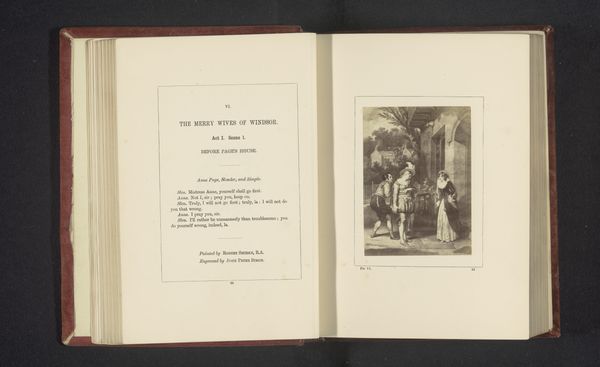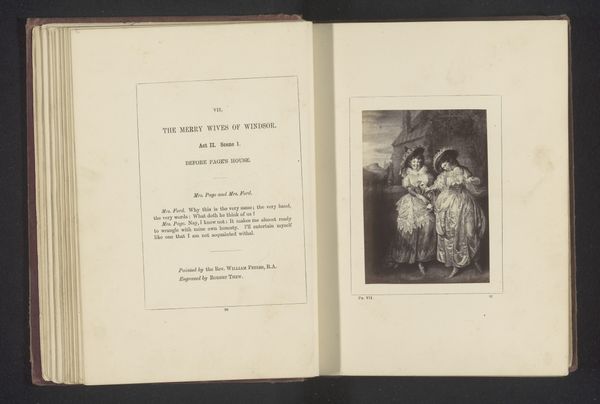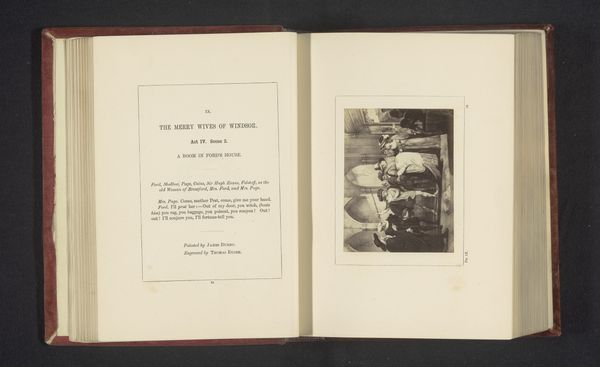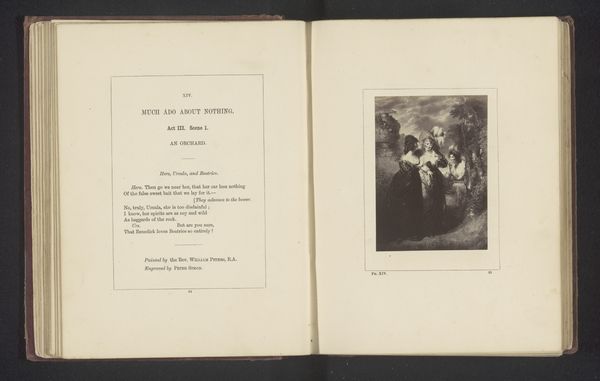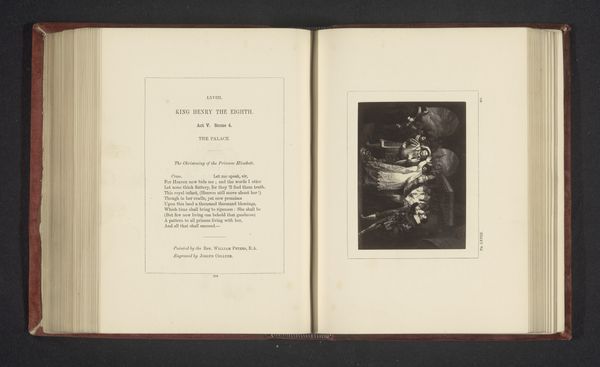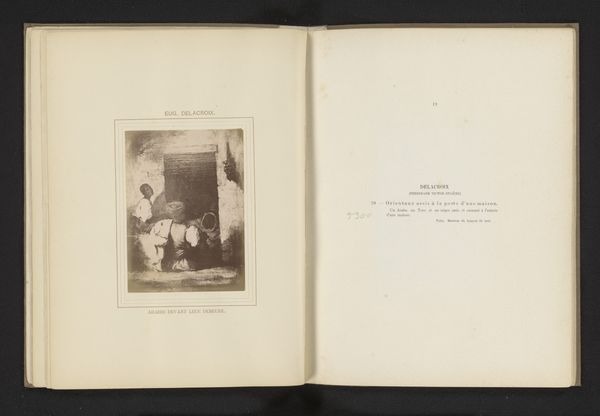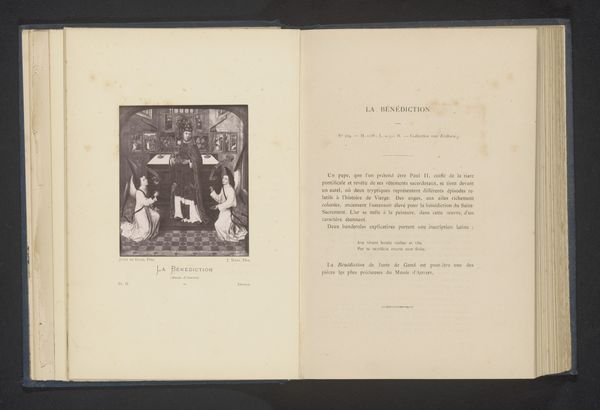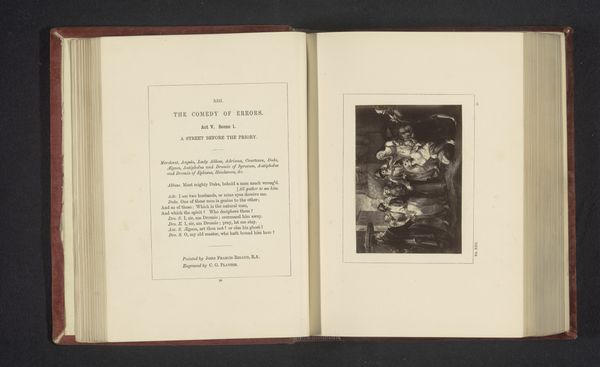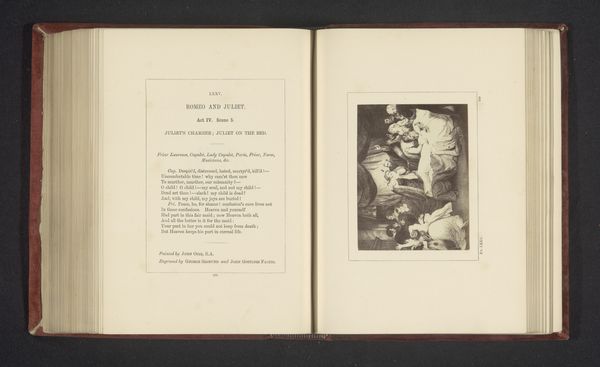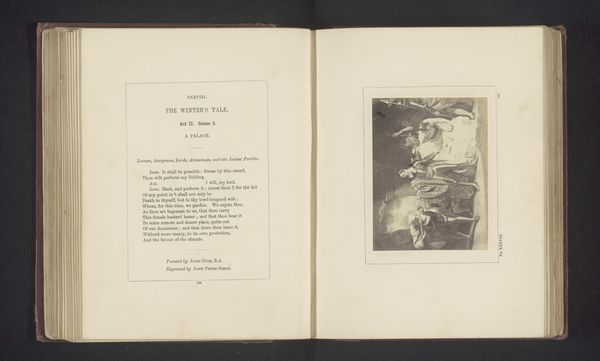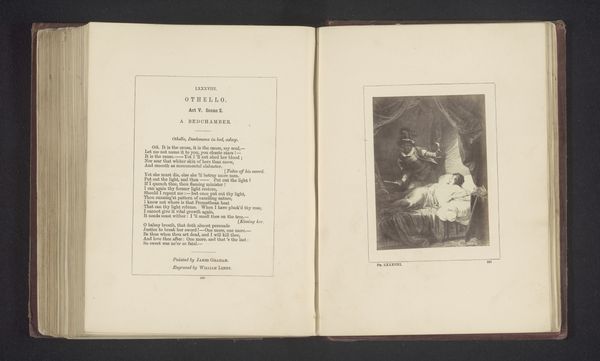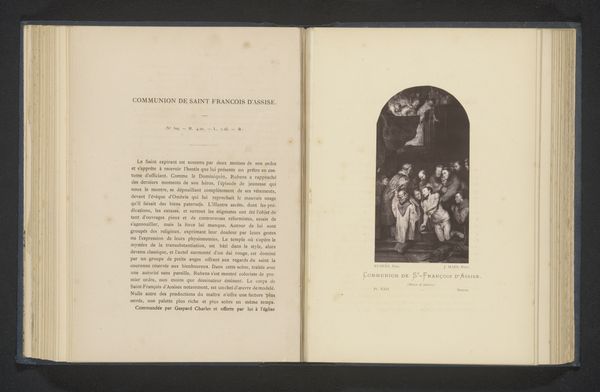
Fotoreproductie van een prent naar een schilderij door Matthew William Peters, voorstellend een scene uit De vrolijke vrouwtjes van Windsor door William Shakespeare before 1867
0:00
0:00
print, etching, photography, engraving
# print
#
etching
#
photography
#
history-painting
#
academic-art
#
engraving
Dimensions: height 100 mm, width 70 mm
Copyright: Rijks Museum: Open Domain
Editor: Here we have a photographic reproduction of an etching or engraving dating from before 1867, based on a painting by Matthew William Peters, illustrating a scene from Shakespeare's "The Merry Wives of Windsor." What strikes me immediately is the composition - a somewhat confined group of figures creating this very intriguing yet slightly obscured drama. What do you see in terms of formal elements that shape our experience of this print? Curator: I am immediately drawn to the contrasting tonal values achieved through the etching technique. The artist meticulously manipulated light and shadow to articulate form and delineate space within this framed pictorial field. Note how the dense cross-hatching in areas, such as the background foliage, creates a sense of depth, sharply contrasting with the smoother planes of the figures' faces and drapery, thus creating an illusion of three-dimensionality on a two-dimensional surface. Editor: So, you're saying the engraver's technical skill really dictated how we perceive the figures and their environment? Curator: Precisely. Consider how the varied line weights contribute to a hierarchy within the image. Thicker, darker lines command attention, guiding our eyes to key narrative elements, while finer lines suggest a softening of form, adding visual texture. How else does the artist invite our eye to travel the artwork's visual plane? Editor: I see, I didn’t initially notice the darker lines around the main characters. It makes it really stand out despite the overall darkness of the image. Now I am really focusing on how the artist managed to do that! Thanks, I definitely learned something today. Curator: Indeed! Recognizing and analyzing these aesthetic strategies unlocks the artist's deliberate construction of meaning within the work itself. I've noticed I was so busy analysing, I need to see it again!
Comments
No comments
Be the first to comment and join the conversation on the ultimate creative platform.
